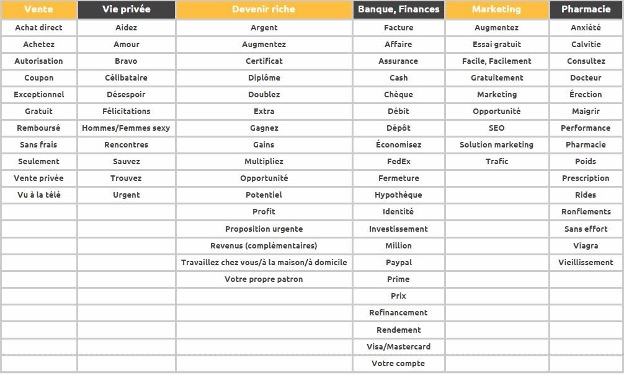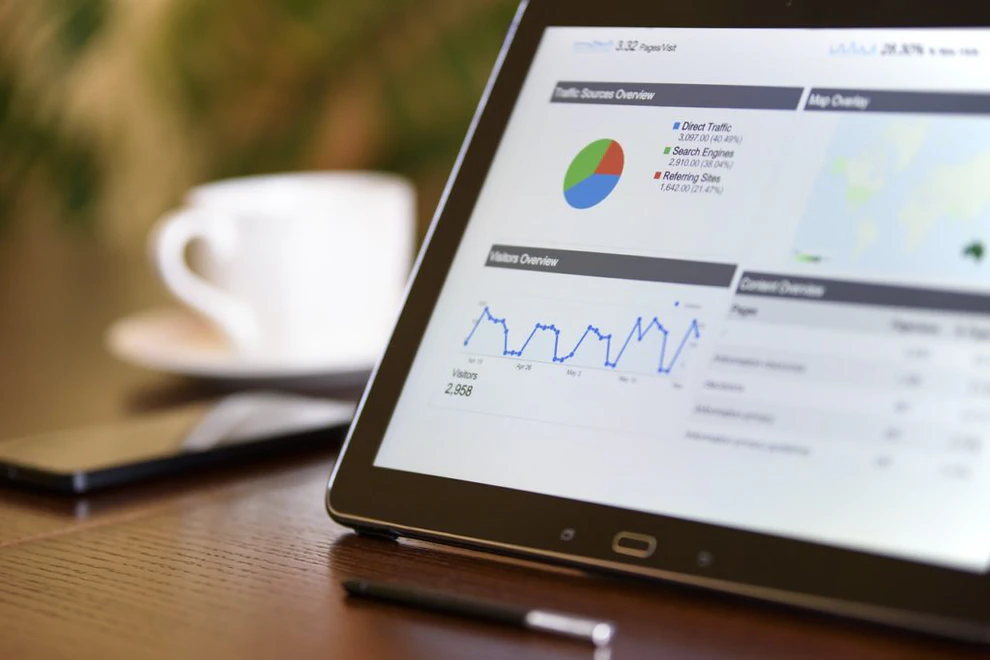Emailing still has a bright future ahead of it! It represents a privileged channel that many companies use to communicate with their prospects and customers, and which can be very effective in establishing a lasting relationship… Provided you opt for good emailing practices that sometimes hide mistakes still too often made by professionals.
Why dwell on best practices? Sending marketing emails is a powerful tool to help you reach your target audience, build a relationship with your subscribers and, ultimately, convert them into customers or retain them. Knowing the best practices and appropriating them will allow you not to miss this digital marketing channel with very good ROI.
Used well, it can bring you results that exceed your expectations and contribute to the growth of your business! We propose here to list the best tips so that your emails reach their readers, be read and, icing on the cake, trigger the desired action. So, are you following us?
What are the different types of emailing?
Emailing in the broad sense includes different types of marketing emails, sent on a larger or smaller scale, with the aim of triggering an action on the part of their recipients and thus generating leads or conversions.
Often personalized, these emails punctuate the customer relationship: from information about your products and services, to conversion and loyalty. They are also a way to interact with your prospects.
There are different types of emailing that each have their strengths in your emailing strategy.
Acquisition and loyalty emailing
These marketing emails are among the best known: they are commercial emails sent to contacts already present in your database. They can take different forms and, often, they consist of nurturing your prospects and retaining your customers by bringing them value in their mailbox (for example: the newsletter). It is these types of emails that are mainly prone to errors or shortcomings (hence the importance of taking a closer look at best practices! 👀).
Transactional email (or service email)
Transactional email involves sending an automatic response to your audience. Its content directly invites you to perform an action: confirmation of a purchase or registration, sending a document following the completion of a form on your website, etc. These emails are almost systematically opened, because they are the logical continuation of an action performed by the user and are expected by the latter. Well worked, they can generate very good results.
Marketing Automation
This category of emailing concerns all emails that fit into automated scenarios. Email campaigns are created to meet marketing and sales objectives, and invite the user to follow a specific path.
For example: a prospect performs an action on your website, such as clicking on the download link of a resource. A marketing automation scenario is then planned to send him a series of emails following his action, without manual intervention. Everything is set up to ensure you save considerable time and money. These types of messages require a little more technique to define your email scenarios and templates, but well mastered, they can become very profitable.
How to make a good campaign? 15 good emailing practices to adopt!
General email marketing best practices
#1. Design an emailing strategy from the start
Before embarking on your emailing campaigns, the first step is to define your emailing strategy, like any digital marketing action.
Whatever your sector of activity, it will be essential to guide your operational choices. It will give a direction to all the actions put in place, in order to make them as relevant as possible to achieve your objectives.
To do this, answer these questions to guide you:
- What are your goals behind each email campaign?
- What are the targets to hit? (think about your marketing persona)
- Which types of emailing are the most relevant?
- How often do you choose to send your emails?
- Which KPIs will help you track your performance?
- Which emailing tool will be likely to meet your needs?
By looking at this information, you will be better able to formulate your objectives, identify your audience and take stock of your management and monitoring tools to ensure quality results.
#2. Segment your email lists
As you probably know, segmentation allows you to obtain the best results in marketing, and emailing is no exception to the rule. Segmenting your email campaign involves dividing it into small groups (or segments) based on groups of people with similar characteristics.
For example, you can segment your email lists according to the following criteria:
- age range,
- socio-professional category,
- geography
- purchase history, etc.
This action will allow you to send tailor-made content that corresponds to the desires, needs and expectations of each group. Thus, you ensure a detailed knowledge of your audience and you create the conditions to obtain better engagement rates and conversions.
#3. Bring value to your recipients
Keep in mind that your emailing must always be relevant to your recipients, in order to lead to sales. Working on the knowledge of your targets will help you provide them with valuable content.
Be sure to respond to a problem they encounter and address their interests, in a form that is not like a commercial speech. It can be information, news related to their industry, new projects you are preparing, etc. In short, aim right by offering exactly the answers to the questions your audience is asking.
💡 The bonus point? Use familiar references, vocabulary and tone to better touch them.
#4. Collect emails in compliance with the GDPR
For your email collection, since 2018 you must comply with the principles of the European Data Protection Regulation (GDPR), which aims to protect users’ personal data.
For this, when you address individuals (B2C), you must use a consent or “Opt-in” feature on your forms, in order to authorize the collection and processing of personal data of your prospects and customers.
In the same logic, you must also propose the removal of your emailing lists through an unsubscribe link or “Opt-out”. Be sure to highlight this link or button and make the process easy, with just a few clicks.
💡 Some tools, such as Corymbus CRM, allow you to remain GDPR compliant by managing registrations, unsubscriptions and the principle of minimization.
#5. Clean your databases regularly
Some of your contacts may never take the step of unsubscribing from your email lists, but they never open your emails. Of course, it is tempting to send your emails to as many people as possible, in order to reach as many prospects as possible. That said, if you keep the most inactive of them, your open rate will be negatively impacted.
Finally, your campaign performance analyses will be distorted, because you do not only take into account the most engaged recipients. And above all, platforms like Gmail detect the non-opening of emails received and tend, in the long term, to no longer deliver emails from senders that are not read.
Review the list of your subscribers who haven’t interacted with your email content in a while, and remove them regularly from your campaigns. Your opening rate will be more representative, and your email campaigns will address an audience that is really interested in what you offer.
💡 You can use the filtering functions of your CRM for this operation, and even entrust the task of automatons to perform this sorting automatically and periodically, as is the case in Corymbus.
Best practices for your email marketing campaigns
#6. Optimize the subject of the email and your preheader
The subject of your email and the preheader (or preview) are the first two elements that your recipient will read in his mailbox: they must therefore be catchy to arouse his interest and his desire to click to know more.
The preheader is the portion of text that appears right after your email subject (and it’s underutilized!). If it is not worked, it is the first lines of your email that will be displayed… You will agree that the effect will not be the same! 💡 Some tips:
- Use between 6 and 10 words for your subject (to avoid it being truncated).
- Put the most important idea first (think about what’s most important to your recipient).
- Think of the preheader as a logical continuation of the subject of the email.
- Place in the preheader the formula that encourages you to open the email.
- Keep it clear and concise: this is a taste of what can be found in the email.
- Test! Analyze your best open rates to apply what works.
#7. Address the recipient with their first or last name
This seems anecdotal or on the contrary obvious, but always essential to remember: be sure to personalize your emails using the first name of your recipient at the top of the email.
Indeed, a “Hello,” or “Dear Member” may seem too impersonal and will impact your open, click and conversion rates.
Many marketing automation software offer this functionality: after a configuration within the tool, your emailing campaigns are sent directly to the name of the contact on your list, and everyone receives the personalized version of the same message.
💡 It is also possible in Corymbus, for example, to use “Dear” or “Dear” depending on the gender of the recipient.
#8. Ensure the clarity of your Call To Action
In email marketing practices, especially B2B emailing, you need to include a clear call to action (CTA). It is a phrase, group of words, or button that prompts the reader to perform a specific action.
For example, if you introduce a customer to a new product, you can add a CTA such as “Learn more” or “Buy now”. If you have a white paper or document for download, CTA may be entitled “Download White Paper”.
Its usefulness? Show your prospect the next step and guide them through your sales funnel.
Make sure your CTA is clear, concise, and self-explanatory, while also agreeing with the rest of your email’s content.
Also, be sure to place it at the beginning of your email to make it visible as soon as it is opened, even before readers start scrolling to read more. You increase the chances of clicks, which will help increase your conversion rate.
💡 Tip: You can use A/B testing methods with multiple versions of the CTA to validate the one that you think is the most efficient.
#9. Harmonize your emails and landing pages
Think of your landing page as an extension of your email. The landing page is a page on which the user arrives once he has clicked on a link in your email: it offers in most cases a form that allows conversion (registration, download, purchase, etc.).
With this in mind, be sure to ensure continuity with the titles, the graphic universe and the content. This consistency helps build your customers’ trust.
💡 Tip: Remember to use measurement and A/B testing tools to check which types of emails and landing pages seem to bring you the best results, so that you can continue to use them.
#10. Ensure deliverability
The deliverability of an email campaign is the percentage of emails that have been received in the recipients’ inboxes, rather than arriving in spam or not arriving at all.
It is important to take this into account when planning an email campaign. To optimize the deliverability of your campaigns, the quality of your emails will be decisive to pass the email test and ensure their proper reception.
For example, the image/text ratio plays an important role: images should generally not exceed 60% of the email (the email must therefore contain at least 40% text).
Also avoid words that look too “commercial” and remove “spam words”, of which here are the most common (non-exhaustive list): Moderator’s blog
 © Blog Du Modérateur
© Blog Du Modérateur
Among the other key best practices: use an email address from your domain name, to be perceived as a reliable source by your recipients.
Many other, more technical parameters also play an important role in the deliverability of campaigns, including:
- SPF, DKIM, DMARC technologies, used to authenticate and legitimize an email and its sender,
- the rate of sending emails,
- the reputation of the IP addresses of the sending servers, and many others.
Best emailing practices to take care of the design of your campaigns
#11. Create email templates in your company colors
Like your website, your email must reflect your brand personality, use its graphic charter and distinctive elements, which obviously includes the logo.
All of these contribute to user engagement. So be sure to include them in your email templates to personalize them and ensure consistency.
#12. Optimize for mobile viewing
Today, mobile has a prominent place in digital uses. 42% of emails are read on a mobile device. However, not all campaigns are optimized for mobile devices yet.
Opt for responsive design: this function intelligently modifies the display of your content so that it adapts to the size of the screen on which it is consulted, whether it is a desktop or laptop, a smartphone, a tablet, etc.
This gives your targets a quality reading experience, no matter where they are.
💡 Do not hesitate to check if your email design is “mobile-friendly” by consulting a test email on a mobile and observing if all the elements display correctly.
This is not only important for aesthetics, but also to ensure that all users will easily find the information they are looking for and access CTAs without problems.
Corymbus CRM offers an email design tool that is compatible with responsive design. The emails will therefore automatically adapt to the format of each recipient’s device. You can view the appearance in the platform on both desktop and mobile.
#13. Limit the variety of fonts
In the same logic of clarity, be careful not to blur the message by using no more than three different fonts. Less distracted by the visual appearance of your content, your reader will be more focused on your message.
In addition, opt for a font size between 10 pts and 12 pts to ensure good readability on all devices.
#14. Keep an email width between 500 and 650 pixels
The width of your email is also to be taken into consideration, so that it displays correctly and quickly. Thus, do not exceed 650 pixels so as not to force readers to scroll horizontally to read all your content.
Reading your emails should require as little effort as possible from readers. Remember to offer the best readability and generally the best user experience, and they will convert all the better!
#15. Add a custom email signature
Even if the email is sent in the name of your company, it benefits from being signed with the name of an identified member of your company.
Reading an email from a real person will capture the attention of your recipients much better than an email from a marketing or “Customer Success” team.
This personalization brings proximity to your communications and builds a lasting relationship of trust with your prospects and customers.
What are the key indicators of emailing?
To evaluate the fruit of your work on your emailing campaigns and better manage them, you must rely on Key Performance Indicators (KPIs) that will help you be in a continuous improvement process.
Some of the indicators you can track include:
- the deliverability rate,
- the opening rate,
- click-through rate,
- the conversion rate.
To find out if emailing is an interesting conversion channel, connect your campaigns to Google Analytics to see the results more closely. You can use its dedicated Campaign URL Builder tool to generate URLs with UTM parameters. These URLs will allow you to track the actions performed on your website by users who clicked on a link in your email.
By closely studying the evolution of the actions you take, you will understand if your email campaigns are performing satisfactorily, and what you will have to keep or on the contrary change.
Do not hesitate to do several test phases. As seen above, A/B testing is a way to test different versions of your emails by sending them to different target groups, and to evaluate those that best match the expectations of your audience.
In conclusion: unleash the full potential of email!
As we have seen, well-thought-out and worked emailing campaigns can be sources of endless possibilities for your business.
By mastering a few of these best practices, you’ll have a golden opportunity to connect more closely with your customers and deliver the right messages. You will see your business grow thanks to the conversion of subscribers into customers! 🤩
By adding your originality, a touch of proximity and regularity, your emails will become an expected appointment in the inbox of your recipients. A great way to build lasting trust in your brand.
😉 👉 If you are looking for an effective emailing tool, Corymbus CRM may be for you! Simple, complete and economical, it offers you features for creating, personalizing and evaluating the performance of your emailing campaigns.
As a bonus: it has the particularity of sending campaigns from your own email address. Thus, you do not pay any additional cost depending on the number of recipients of your campaigns. Do not hesitate to test it!


